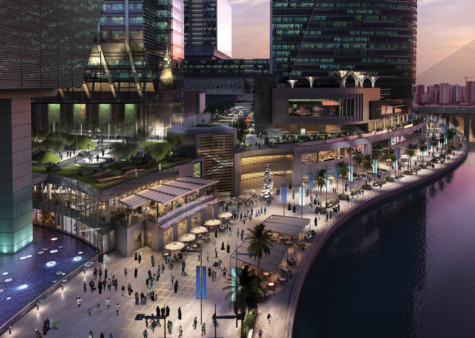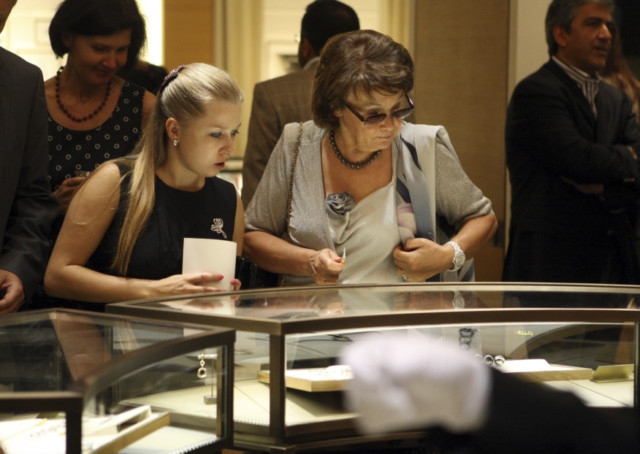
Abu Dhabi’s retail landscape is growing so fast that it currently ranks tenth on a list of cities worldwide with the most retail space under development, according to research by global property advisor CBRE. The capital has more than 800,000 square metres of new retail space being developed, a part of the 32 million square metres of shopping centre space being constructed globally.
According to the CBRE ranking, Dubai — in 36th place — is the only other GCC city in the top 50.
Bigger and better
“The most striking thing is the development pipeline and how much more space we will see in the next three to five years,” Matthew Green, Head of Research UAE, CBRE Middle East, tells GN Focus.
“Also, historically we have seen that the malls in Abu Dhabi have been big, but they have still been under 100,000 square metres. But some of the new developments are 200,000 square metres and more, which puts them in the category of mega malls or super regional malls.”
Traditionally, Abu Dhabi’s retail offering has drawn superlative brands in the luxury sector such as Jimmy Choo and Hermès.
Victoria Christian, brand ambassador for Clive Christian, which is known as the world’s most expensive perfume, has a story to tell of the last time she visited Abu Dhabi. “My favourite customers were newly wed Emiratis. They told me they came looking for gifts and unbeknown to each other, she had bought a Clive Christian set for him and he had bought one for her. They had no idea of its history or anything, but it became their special perfume,” she says.
Clearly, demand is thriving here. Online chat forums featuring luxury-shopping expats rarely speak of price but are known to test the availability of the latest Birkin, Kelly or Lindy bag from Hermès, talking about the difficulty of “scoring a B or a K as a walk-in customer”.
In September, when Van Cleef & Arpels opened at Etihad Towers, the company launched an exclusive edition of its Vintage Alhambra collection in turquoise and yellow gold. Alban Belloir, Managing Director, Van Cleef & Arpels Middle East & India, tells GN Focus: “The success was immediate and 90 per cent of the collection was sold in a few months.”
Industry experts say the emirate has always been an attractive destination. “Abu Dhabi has always proved to be a good market,” says Rizwan Sajan, Founder and Chairman, Danube Group. “Our first branch was in Dalma Mall and right from the day that we opened business has been good.
“The Emiratis are working and prosperous, plus a whole lot of housing projects have been announced. The projects that had been put on hold have been revived. People, in general, are willing to pay more for better brands and better quality. In Abu Dhabi, the concern is more with quality rather than with pricing.”
More malls coming
But it was only a while ago that any discussion of Abu Dhabi’s retail was dominated by the fact that there was a serious lack of space.
“After a period of significant under supply, where many of the major malls have been running at close to 100 per cent occupancy, we are now entering a new growth period for retail stock,” says Green.
Among the new malls are The Mall at World Trade Centre, a shopping centre with 60,000 square metres of leasable space in downtown Abu Dhabi and The Galleria, a 50,000-square-metre luxury shopping centre on Al Maryah Island. These are expected to be completed this year. Yas Mall, the UAE’s second-largest shopping centre at 235,000 square metres, is expected to open early next year.
The next couple of years will see Al Wahda Mall doubling in size while Paragon Mall will be completed, along with smaller projects such as Emporium at Central Market.
Not all development is devoted to the luxury sector. In April, the municipality announced plans to construct 25 shopping centres in residential districts across the emirate as part of the city’s strategy to develop community-based projects.
Destination Abu Dhabi
Late last year, the Abu Dhabi Tourism and Culture Authority set up an industry development committee for retail in order to grow shopping as a leisure activity.
Says Green: “It is not just about the size of the malls, but the fact that these are destination malls.
“The introduction of mega malls with leisure facilities means the focus is on increasing dwell time, which helps increase the amount of sales as well.”
Retail majors certainly agree. “Abu Dhabi is a city very rich in identity and heritage, operating at its own speed,” says Matthieu Dupont of luxury watch brand A. Lange & Söhne. “Our boutique in the Avenue at Etihad Towers has paved the way for a more boutique and customer-centric style of retail experience, which will only solidify Abu Dhabi’s positioning as a future cultural and luxury shopping destination.
“Our biggest challenge is ensuring reasonable delivery delays, which can be quite tricky, considering an ever-increasing demand,” he says.
In terms of tourism, Abu Dhabi is still lagging far behind Dubai.
“Traditionally, Dubai has been a stepping stone for brands wanting to enter the region,” says Green. “Over the next five years, you may see new market entrants who have not been in Dubai, particularly in the higher end of the spectrum.”
Retailers will certainly take note of the new destination. The Galleria is expected to open in August with stores such as Dolce & Gabbana, Fred Perry, Jimmy Choo, Michael Kors and Mulberry.
The mall will also feature Dior, Fendi, Burberry, Miu Miu and Ralph Lauren boutiques, as well as luxury accessories and fine jewellery brands Mikimoto, Pomellato, Richard Mille and Tag Heuer. Jimmy Choo, Berluti, Boucheron, Diane von Furstenberg and Moschino will also set up shop for the first time in Abu Dhabi here.
Abu Dhabi is taking its place on the world shopping map, where shopping centre development activity is concentrated in emerging markets, with China home to more than half of all the space under construction (16.8 million square metres). Seven of the ten most active development markets globally are in China. These include Chengdu (2.9 million) and Tianjin (2.1 million), with Shenyang, Chongqing, Wuhan, Guangzhou and Hangzhou due to deliver more than one million square metres each over the next three years.








